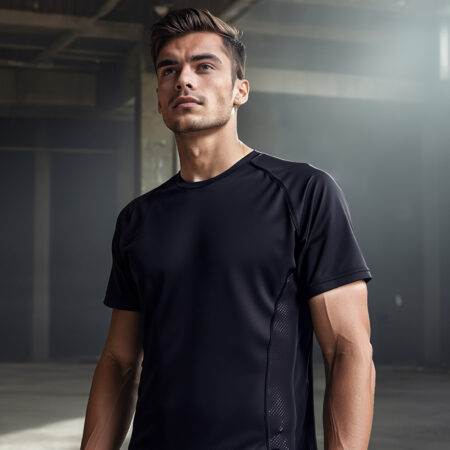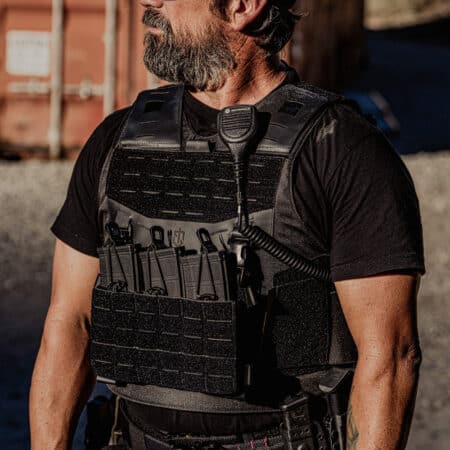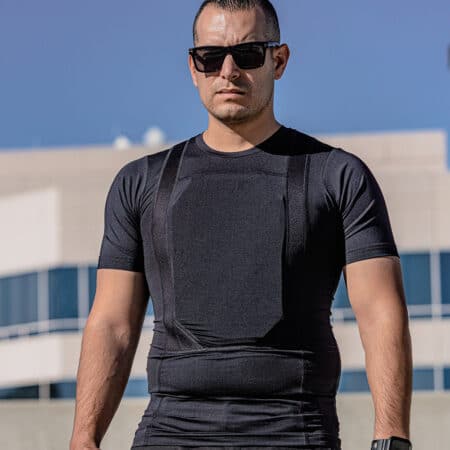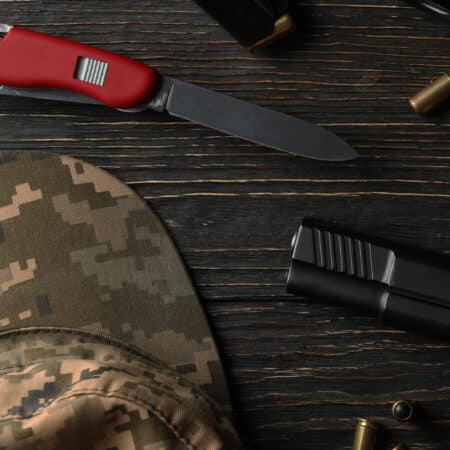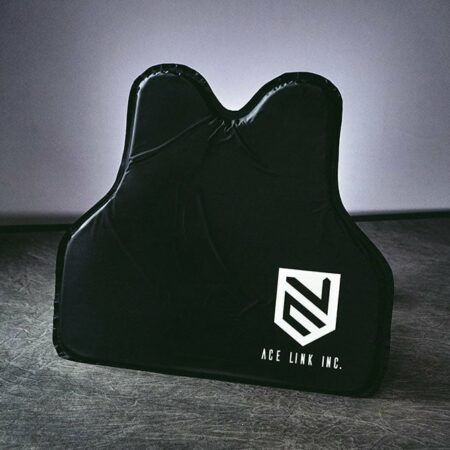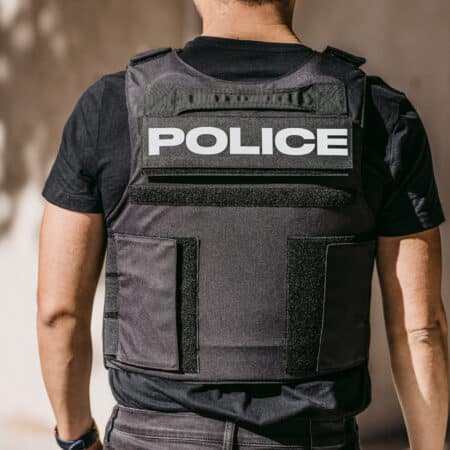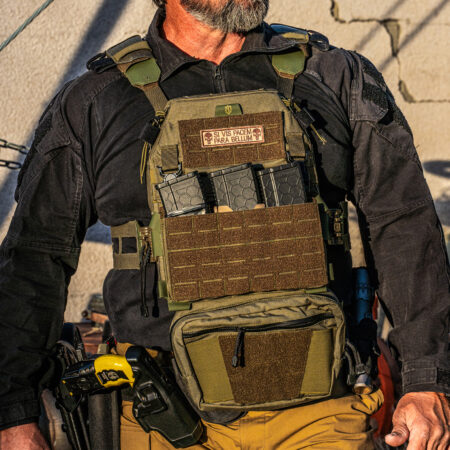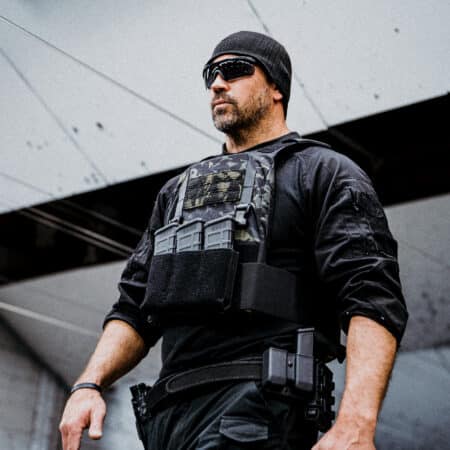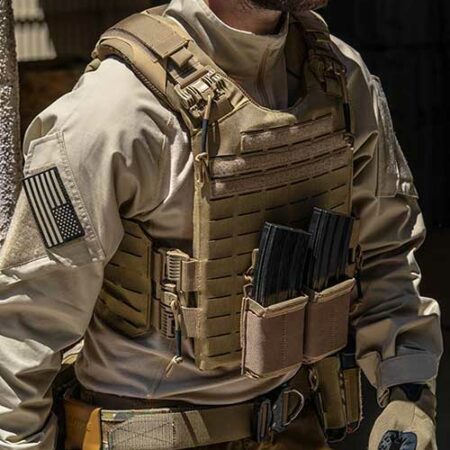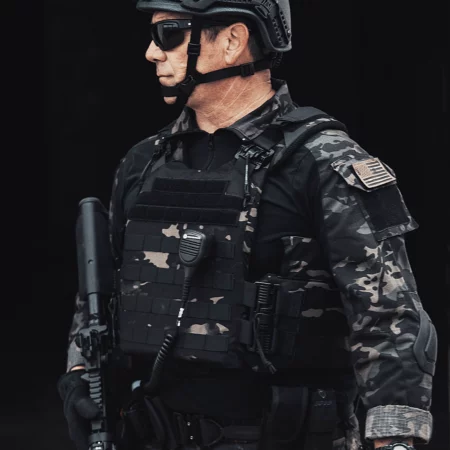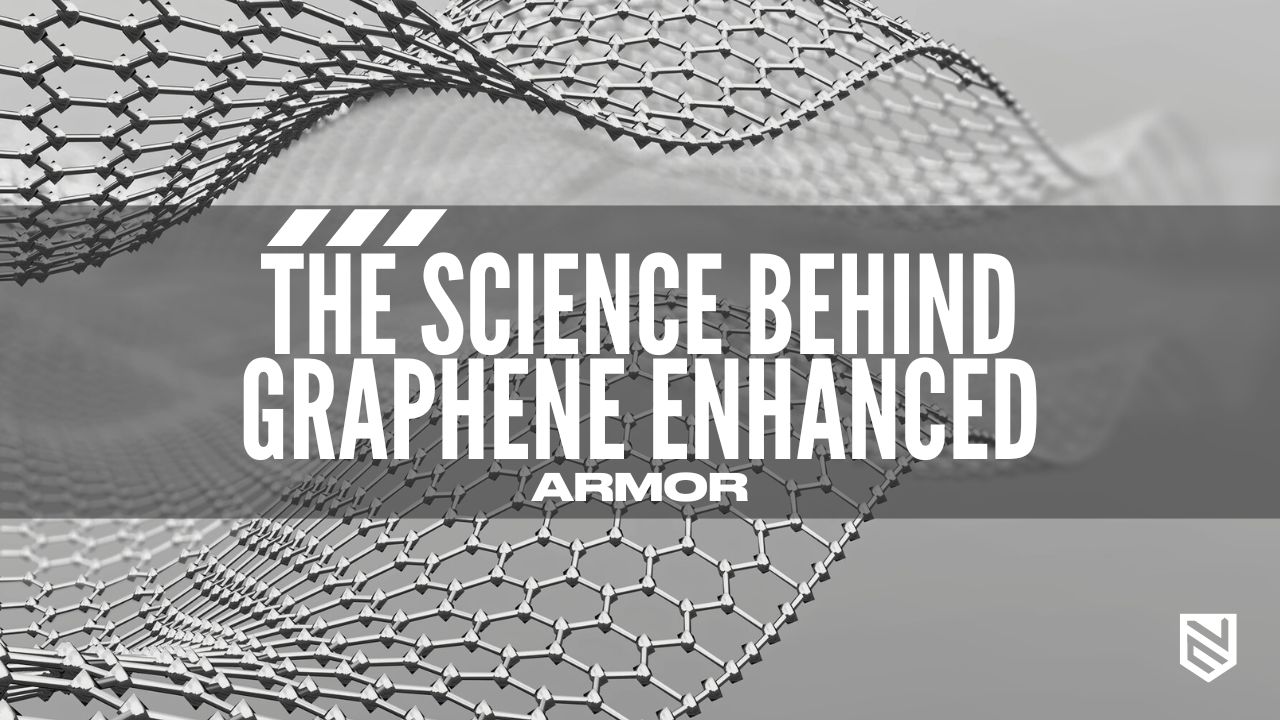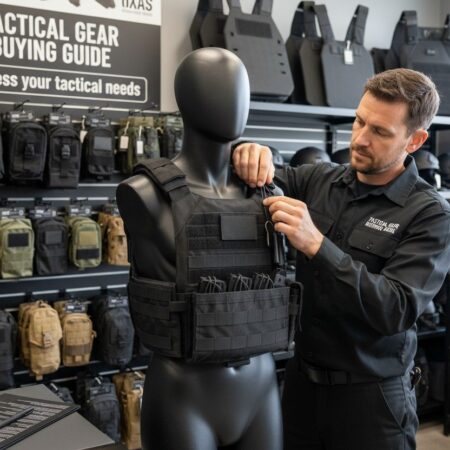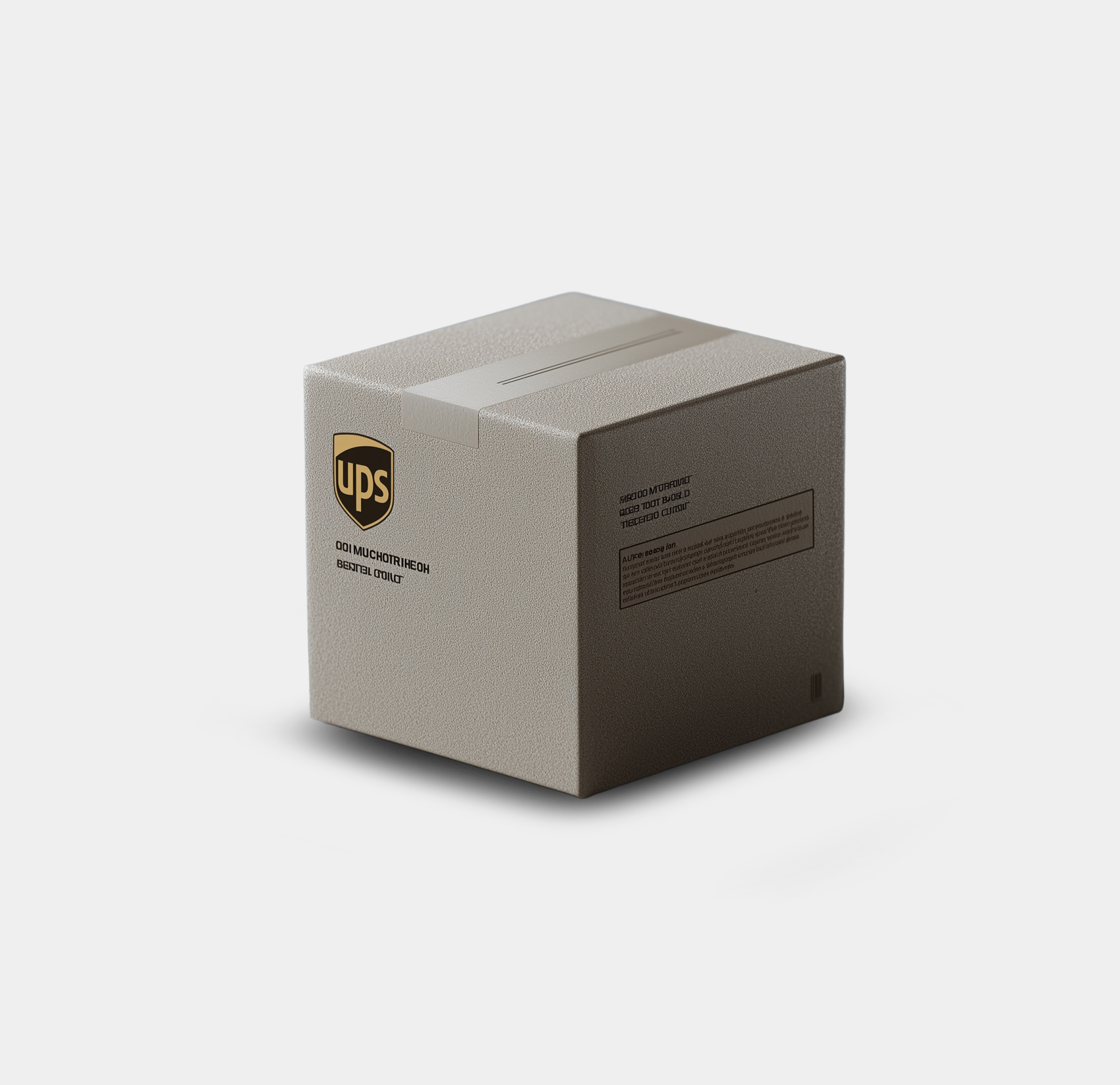- Strength & Weight Benefits of graphene enhanced armor– 200x stronger than steel, yet lightweight.
- Impact Dispersion – How graphene enhanced armor absorbs energy better than ceramics.
- Flexibility Without Weakness – Why soft armor is no longer a liability.
- Thermal Stability & Fire Resistance – No weakening under extreme heat.
- Field Use Applications
- Conclusion & Call to Action – Experience the future of ballistics.
For decades, soldiers and police officers have relied on bulky, rigid armor for protection, but what if the next generation of body armor could be as thin as fabric, yet stronger than steel? Enter graphene Enhanced body armor: a material so revolutionary, it’s turning science fiction into lifesaving reality.
Graphene. It is a single layer of carbon atoms locked in a hexagonal honeycomb pattern, resembling the mesh of chicken wire or a beehive. This revolutionary material earned its discoverers a Nobel Prize in 2010. While found in pencil lead, its isolated form is the thinnest known material and theoretically the strongest.
So, let’s take a look at the Science behind Graphene-Enhanced Armor, and how it is Stronger, Lighter, and More Protective
Strength & Weight Benefits of graphene enhanced armor– 200x stronger than steel, yet lightweight.
In laboratory conditions, graphene shows tensile strength 200x greater than steel by weight. Real-world composites? Still 10-50x stronger—meaning Graphene Enhanced armor could be both lighter and tougher. The U.S. military and Law enforcement agencies all over the country spend millions every year treating armor-related injuries. From back problems caused by heavy plates to gaps in protection due to poor fit. Graphene solves both problems: it is lightweight to prevent fatigue, and flexible enough to eliminate dangerous gaps. All, while providing better protection.
Modern armor is being transformed by adding graphene to existing materials. Instead of relying on untested pure-graphene designs, real-world upgrades blend graphene with traditional armor components, creating stronger, lighter protection than ever before.
In fact, Our new Graphene Enhanced Soft armor plates are flexible and weigh as little as 1.25 kgs or 2.7 lbs , while providing protection comparable for level III+ armor plates.
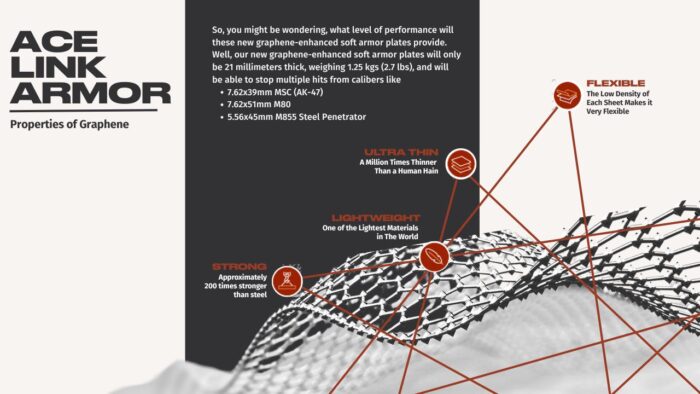
Impact Dispersion – How graphene enhanced armor absorbs energy better than ceramics.
Traditional ceramic armor works by sacrificing itself – shattering to absorb a bullet’s energy in what amounts to a controlled failure. It’s effective, but inherently limited. Graphene enhancement changes this equation entirely by giving armor the ability to survive multiple hits while maintaining protection.
The difference lies in how these materials handle impact:
Where standard ceramics fracture catastrophically, graphene-reinforced versions reduce crack propagation by up to 70%, with the graphene fibers acting like microscopic reinforcement bars that bridge and deflect cracks. Furthermore, Energy absorption capacity doubles in composite testing, allowing thinner armor to outperform thicker traditional plates
This critical multi-hit capability improves dramatically, with some configurations withstanding three times as many impacts before reaching their failure point
The numbers tell the story of why graphene enhanced armor is such a game changer:
- 1 TPa Young’s modulus gives graphene the stiffness to resist deformation
- 42 N/m breaking strength allows it to stretch and absorb energy rather than shatter
- 15-20% weight reductions are achieved without compromising protection levels
But the real magic happens at the microscopic level. When a bullet strikes a graphene-enhanced ceramic plate, the ceramic fractures—just as it would in a traditional system. But instead of shattering into failure, the embedded graphene network instantly begins redistributing the residual energy across the surface. Acting like microscopic rebar, it bridges cracks, redirects stress, and prevents the kind of catastrophic failure that compromises traditional armor after a single hit. The result is localized damage, not total breakdown—meaning the plate can survive multiple impacts and still perform.
This isn’t an incremental improvement; it’s a complete reengineering of how armor responds to kinetic energy. Traditional ceramics are binary: they work until they don’t. Graphene hybrids introduce something new—a damage gradient that keeps protecting even after being struck.
Flexibility Without Weakness – Why soft armor is no longer a liability.
Traditional soft armor required a trade-off between flexibility (for movement) and strong protection. New flexible armor, enhanced with graphene, solves this by offering both mobility and the ability to stop rifle bullets. These are already being tested in real-world conditions, proving they work.
What truly sets this material apart is how it responds under real-world stress. Unlike traditional soft armor that deforms permanently when hit, graphene-enhanced armors:
- Flex naturally with the wearer’s movements (no stiff, restrictive panels)
- Rebound after impact rather than developing weak points
- Maintain integrity across multiple hits that would compromise Kevlar
This transformation comes from graphene’s unique properties: 130 GPa tensile strength that maintains protection during flexing, combined with energy absorption capabilities that prevent penetration even when the material bends. The result is armor that finally delivers both the mobility officers need and the protection they deserve.
Thermal Stability & Fire Resistance – No weakening under extreme heat.
While traditional armor fails catastrophically under thermal stress, graphene-enhanced materials demonstrate unprecedented resilience, maintaining structural integrity at 400-600°C (752-1112°F)—far exceeding the 204°C limit of standard UHMWPE.
This performance stems from graphene’s ability to dissipate heat more effectively than conventional polymers (2000-5000 W/m·K vs 0.2 W/m·K) while simultaneously reducing flame spread by 50% in composite fabrics and significantly lowering toxic smoke production.
These properties create armor that withstands thermal extremes without compromising protection—a breakthrough that redefines survivability in high-temperature environments.
These properties translate to critical field advantages:
- Protection remains stable during prolonged exposure to fire or explosions
- Preservation of ballistic performance even after exposure to temperatures that would degrade traditional armor
The combination of graphene’s thermal conductivity and stability creates armor that protects equally against ballistic threats and environmental extremes—a dual-capability previously unattainable in personal protection systems.
Field Use Applications
Graphene has incredible potential for military and law enforcement applications, revolutionizing fields from personal protection systems to advanced lightweight armor for vehicles and aircraft. Stronger, lighter, and more heat-resistant than steel or ceramics, graphene could redefine modern combat and defense systems.
However, while its theoretical potential is vast, the industry will need time to fully integrate graphene into practical use. To illustrate its transformative possibilities, consider the evolution of plastics. Like graphene, plastics were a groundbreaking discovery that gradually became ubiquitous across countless applications—including lightweight armor plates made from Ultra-High Molecular Weight Polyethylene (UHMWPE). Yet, this progress required decades of testing, research, and development before plastics achieved widespread adoption.
Graphene will likely follow a similar trajectory, and it may take years, if not decades, before we see its full integration into military applications. That said, graphene-enhanced armor is already making strides as a breakthrough technology, with early adoption in law enforcement and select military uses.very
Conclusion & Call to Action – Experience the future of ballistics.
Graphene-enhanced armor represents more than an incremental improvement—it’s a fundamental leap in protective technology. By combining unprecedented strength-to-weight ratios with advanced energy dispersion and thermal stability, these materials are redefining what armor can achieve.
Moreover, as research and development continues, we will see graphene make its way into a wide range of applications, and its future in ballistic protection is very promising.



